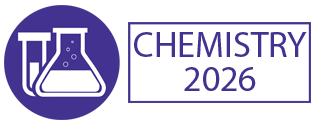Archaeometry
Archaeometry Is The Methodical Application Of Scientific Tools And Principles To The Characterization, Analysis, And Interpretation Of Archaeological Materials. The Goals Of Archaeometry Are To Understand The Materials, Processes, And Structures Of The Archaeological Record, To Develop Valid And Reliable Interpretations Of Its Meaning And Evolution, And To Improve Archaeological Evaluation And Interpretation. Archaeometry Integrates Approaches From Both Archaeological And Scientific Fields, Such As Chemistry, Physics, And Geology. It Is Often Used To Study Archaeological Sites From The Earliest Days Of Human History To The Present. Archaeometry Can Include A Variety Of Scientific Techniques, Such As Isotopic Analysis, Thermoluminescence, Chemical Analysis, And X-Ray Diffraction. Isotopic Analysis Is A Method Of Determining The Age Of A Sample Based On The Relative Amounts Of Certain Radioactive Isotopes In The Sample. Thermoluminescence Involves Using Heat To Measure The Accumulated Charge In Materials, And Can Be Used To Date Pottery Fragments. Chemical Analysis Utilizes Various Spectroscopic Techniques To Identify And Quantify The Elements Present In A Sample. X-Ray Diffraction Is Used To Identify The Components Of A Sample And Can Reveal How The Sample Was Made Or Altered. Archaeometry Is Important In Helping To Interpret Archaeological Sites And Artifacts. It Can Be Used To Date Sites, Understand How People Used The Resources Around Them, And Learn More About Cultural Practices Of Different Societies. Archaeologists Can Use These Results To Piece Together The Past Or Refine Existing Interpretations. In Addition To Its Role In Deepening Our Understanding Of The Past, Archaeometry Has Also Been Used To Preserve Sites. Archaeometry Can Be Used To Identify Damaging Processes, Such As Soil Erosion And Water Damage. This Information Can Help Archaeologists Develop Conservation And Management Plans To Protect The Sites. Thus, Archaeometry Has Provided An Invaluable Tool For Interpretation Of Archaeological Sites And Artifacts, Allowing Us To Gain A Greater Appreciation Of The Diversity And Complexity Of Human Societies. Archaeometry Is An Ever-Evolving Field That Integrates Advances From Both The Archaeological And Scientific Disciplines, Offering Exciting Possibilities For Further Archaeological (And, By Extension, Historical) Study.

Hossam A Gabbar
Ontario Tech University, Canada
Victor John Law
University College Dublin, Ireland
Alexander Bagaturyants
National Research Nuclear University MEPhI, Russian Federation
Sergey Suchkov
N.D. Zelinskii Institute for Organic Chemistry of the Russian Academy of Sciences, Russian Federation
Shree Niwas Chaturvedi
Centre for Aptitude Analysis and Talent Search, India
Pieter Samyn
SIRRIS, Belgium




Title : Advances in plasma-based radioactive waste treatment
Hossam A Gabbar, Ontario Tech University, Canada
Title : Unraveling the ultrastructure and functions of the neuronal membrane skeleton using super-resolution fluorescence microscopy
Zhou Ruobo, Djillali Liabes University of Sidi Bel Abbes, Algeria
Title : Solar box cooker dehydration, and relative humidity endpoint detection, of lamiaceae culinary leaves on the island of Crete
Victor John Law, University College Dublin, Ireland
Title : Nutrient and heavy metal loads from the Ribeiras to Coastal zones: A land-ocean continuum perspective in Madeira Island
Aracelis Del Carmen Narayan Rajnauth, University of Porto, Portugal
Title : Prospective polyoxometalate-based covalent organic framework heterogeneous catalysts
Arash Ebrahimi, Comenius University Bratislava, Slovenia
Title : Eliminating implant failure in humans with nano chemistry: 30,000 cases and counting
Thomas J Webster, Brown University, United States